23 June 1778 Tuesday
. . . . . .
1789
Descrizione dei circhi, particolarmente di quello di Caracalla e dei giochi in esso celebrati
Description of circuses, particularly that of Caracalla and the divine games celebrated in it
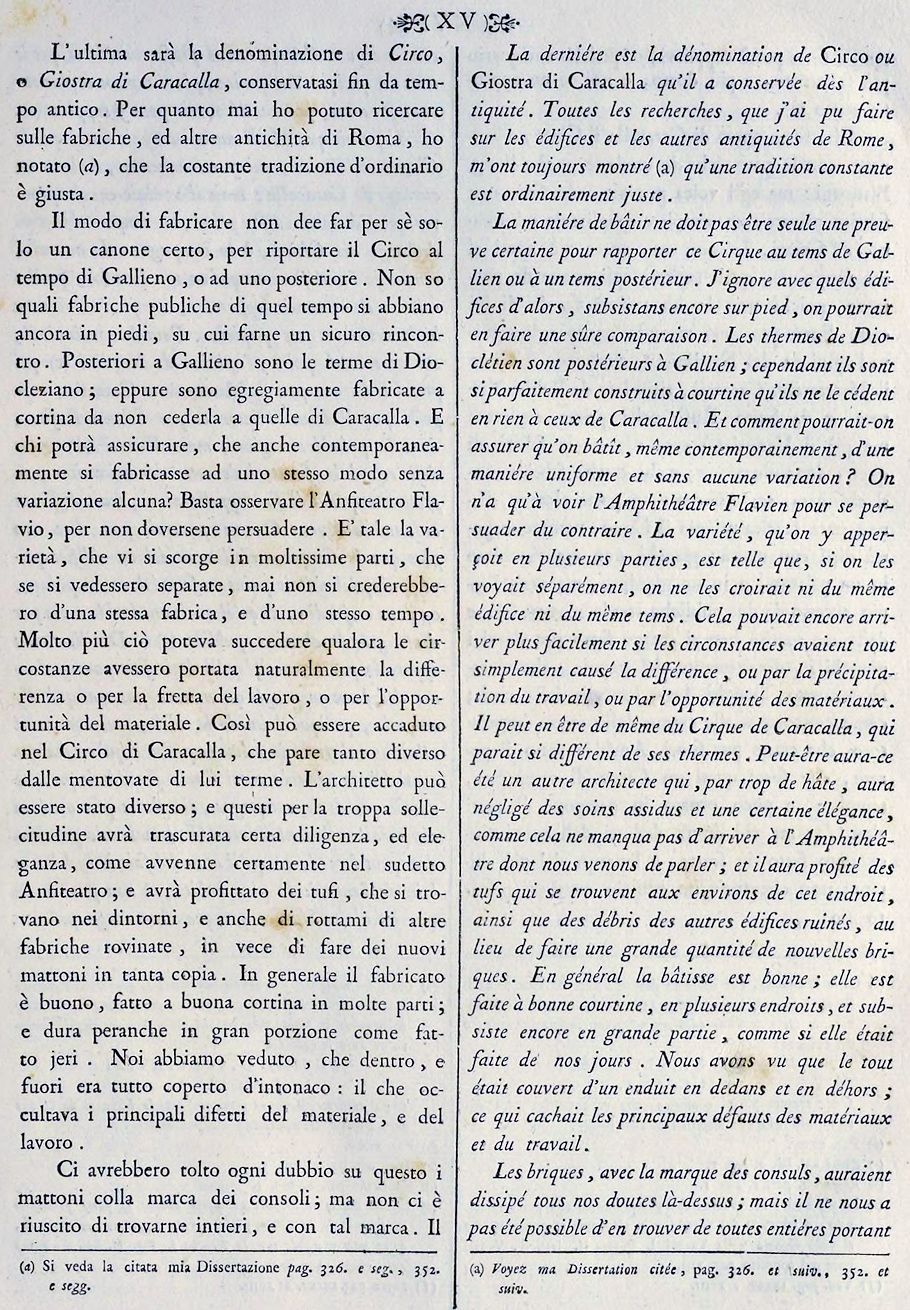
The last will be the denomination of Circus, or Giostra di Caracalla, which has been preserved since ancient times. As far as I have ever been able to research the buildings and other antiquities of Rome, I have noticed (a) that the constant tradition of the ordinary is correct.
The method of building must not only make a certain canon for itself, to bring the Circus back to the time of Gallienus, or to a later one. I don't know what public buildings of that time are still standing, on which to make a sure reference. After Gallienus are the Baths of Diocletian; yet they are excellently built in curtain not to yield it to those of Caracalla. And who will be able to ensure that even at the same time it was made in the same way without any variation? Just look at the Flavian Amphitheater, not to have to be persuaded. The variety that can be seen in many parts is such that if they were seen separately, they would never believe they were from the same building and from the same time. This could happen much more if the circumstances had naturally brought about the difference, either due to the rush of the work, or due to the opportunity of the material. This may have happened in the Circus of Caracalla, which seems so different from the mentioned baths of him. The architect may have been different; and the latter, due to excessive solicitude, will have neglected a certain diligence and elegance, as certainly happened in the aforementioned Amphitheater; and he will have profited from the tuff found in the surrounding area, and also from the scraps of other ruined buildings, instead of making so many new bricks. In general the fabric is good, made with good curtain in many parts; and it also lasts in large part as did yesterday. We have seen that inside and out everything was covered with plaster: which hid the main defects of the material and of the work.
The bricks with the brand of the consuls would have removed all doubts about this; but we have not been able to find whole ones, and with that brand. Perhaps time will be able to replace you, or some more fortunate and more learned antiquarian, and we will take advantage of it (a).
32 y.o. Francesco Piranesi 1 August 1790
Raccolta de'Tempj antichi, Vol. II.
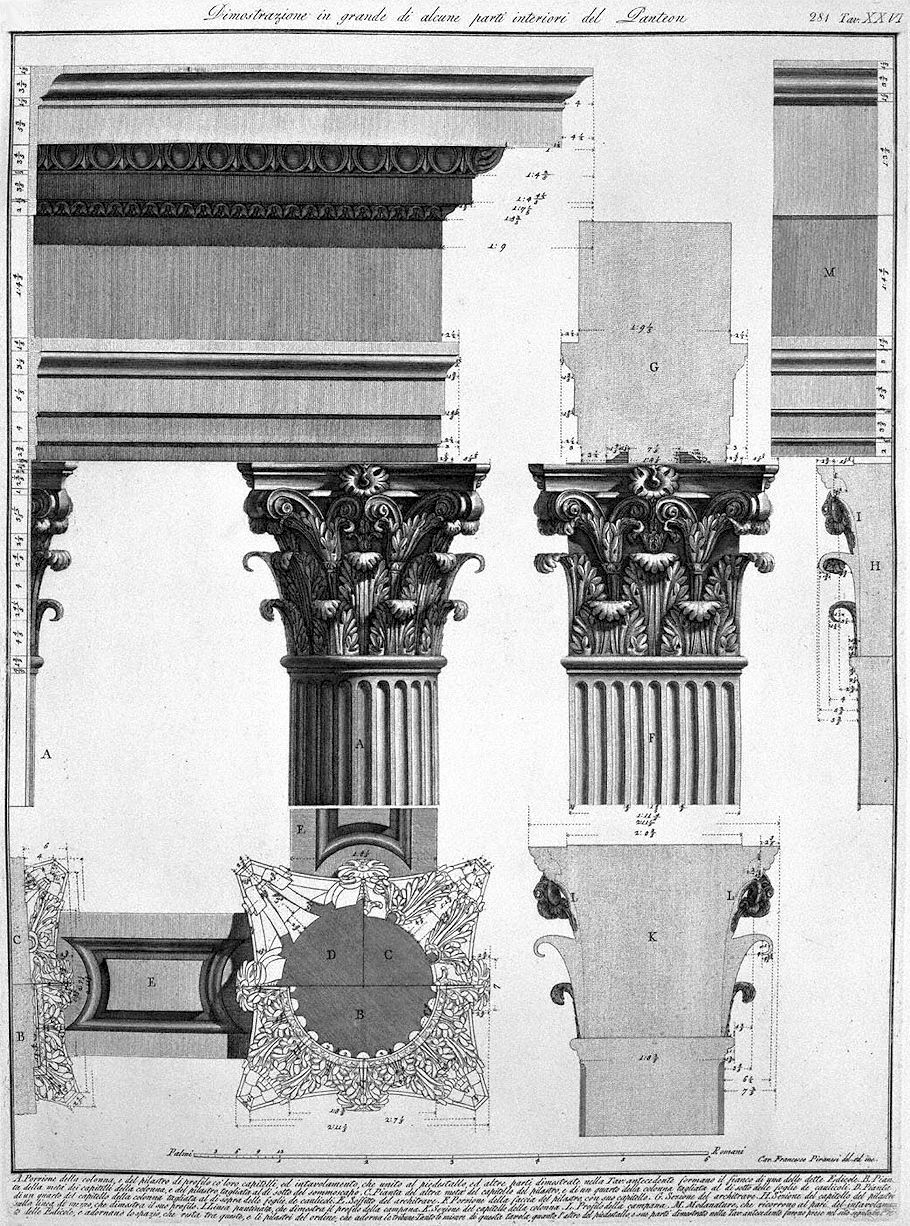
Large demonstration of some internal parts of the Pantheon
A. Portion of the column and of the pilaster in profile with their capitals and tablature, which together with the pedestal and other parts shown in the preceding plate form the side of one of the said aedicules. B. Plan of half of the capitals of the column, and of the pilaster cut below the sommoscapo. C. Plan of the other half of the capital of the pilaster, and of a quarter of the column cut out below the leaves of the caulicles. D. Plan of a quarter of the column capital cut above the leaves, de caulicli. E. Lintel ceiling. F. Portion of the face of the pillar, with its capital. G. Section of the architrave. H. Section of pilaster capital on midline, demonstrating its profile. I. Dotted line, demonstrating the profile of the bell. K. Section of the column capital. L. Profile of the bell. M. Mouldings, which recur like the paneling of the Aedicules, and adorn the space that remains between them, and the pillars of the order, which adorns the tribunes. Both the measurements of this table and the other of the pedestal, and its parts shown in the previous table, were taken at the site marked in P.
Cav. Francesco Piranesi drawn and engraved
23 June 1812 Tuesday
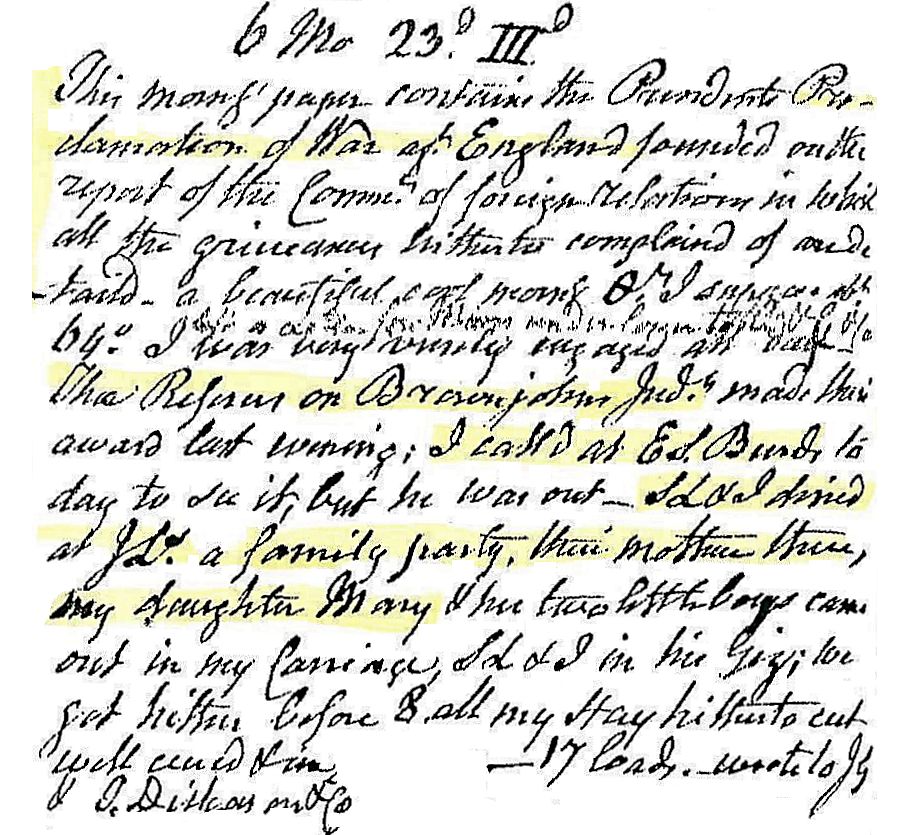
This morning's paper contains the President's Proclamation of War against England founded on the report of the Committee of Foreign Relations in which all the grievances hitherto complained ..... ...... A beautiful cool morning, temperature I suppose 64°. [an illegible text insertion] I was very ........ engaged all day. The referee on Brown[?] Johns Judg. made their award last evening; I call at E S Bird[?] today to see it, but he was out. SL and I dined at JL's, a family party, their mother there. My daughter Mary and her two little boys came out in my carriage, SL and I in his gig. We got hither before 8. All my hay hitherto cut, well cured and in 17 loads. Wrote to JG and T Dickenson and Co.
23 June 2000
new books
Virtually Carved in Stone: a masterplan of mistakes and inversion
23 June 2005
original content
I think original content scares people. I think it especially scares people that want to be original themselves. For example, originality in design makes other designers feel inadequate, although mimesis is guaranteed to follow. There is also the guarantee that some will immediately steal the original content and then quickly try to somehow pass it off as their own.
Re: question
One of the reasons that original content scares people is because they immediately recognize that they have no control over the original content. Even before the subsequent mimesis happens, there are those that will right away try to control original content.
23 June 2017
Via Appia/Las Vegas Strip at the same scale
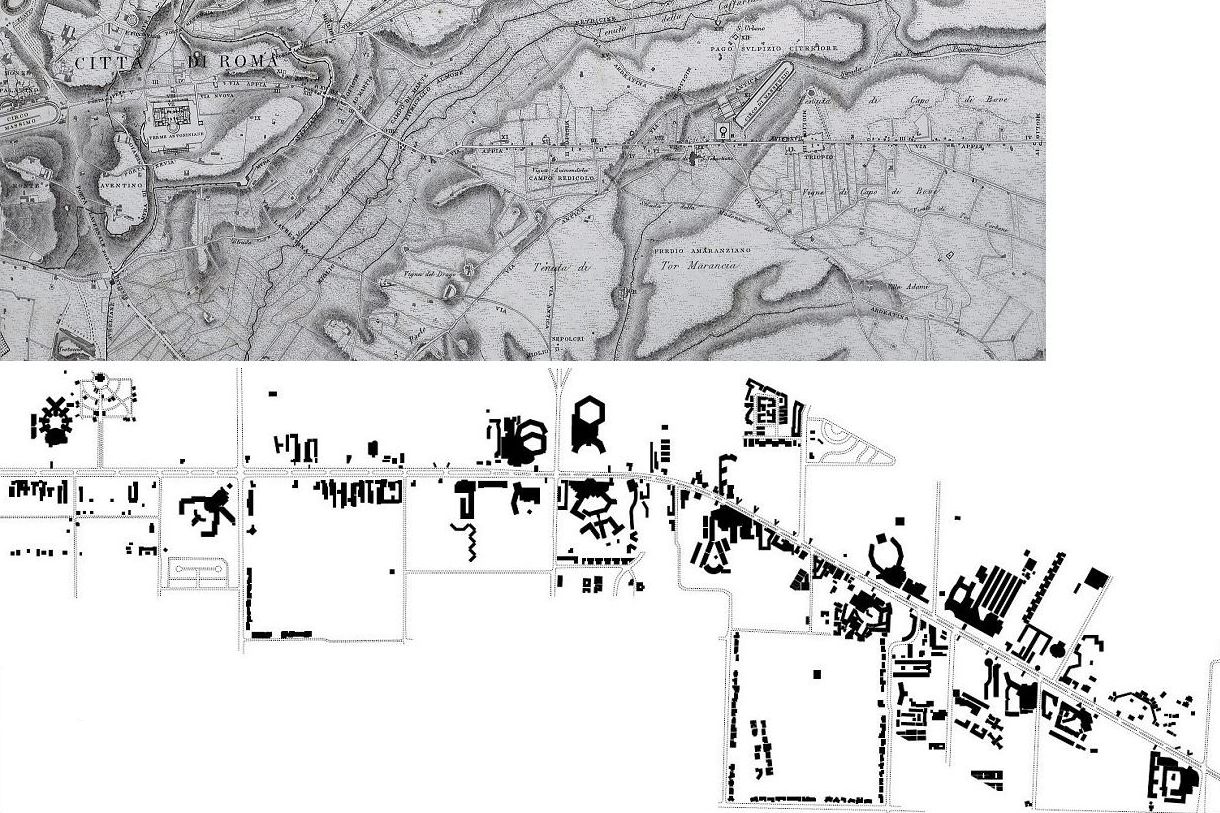
23 June 2020
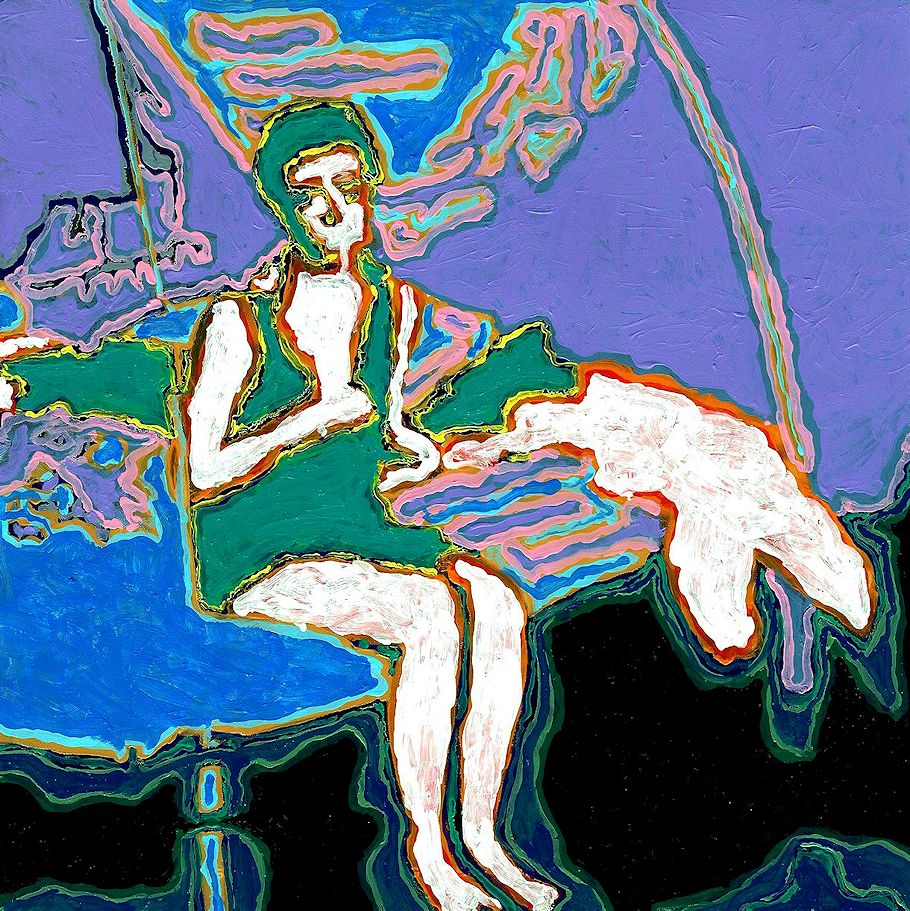
Mary Boone's 180 hours of community service hours 118 119
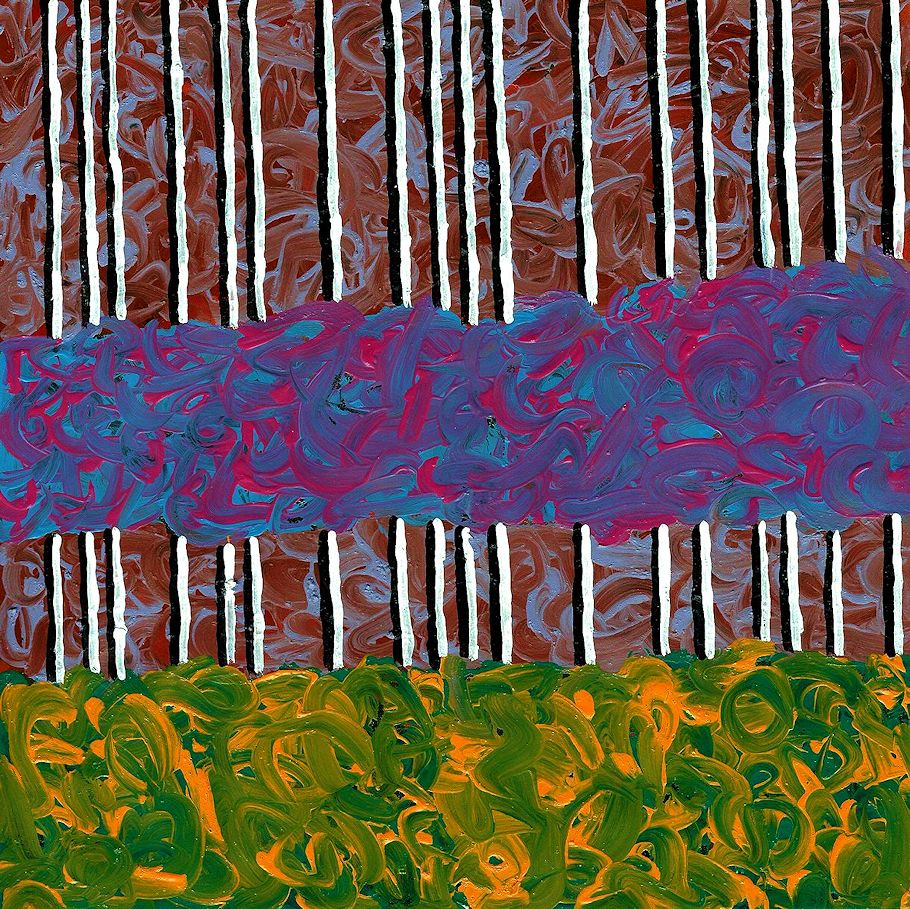
Mary Boone's 180 hours of community service hour 120
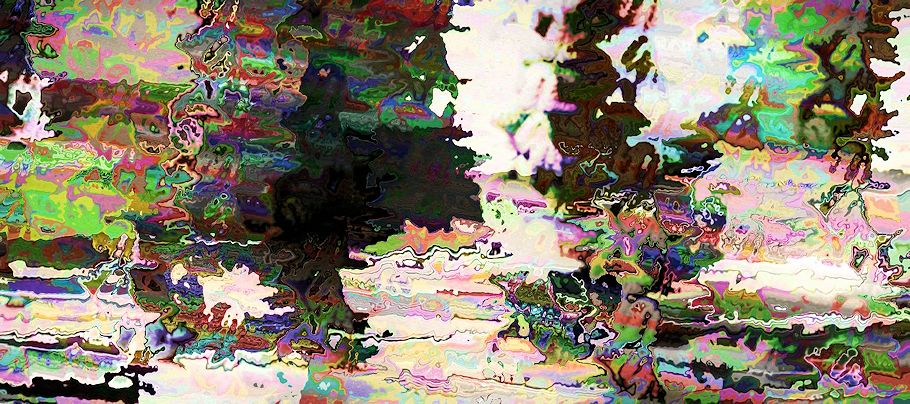
Virtual Painting 554
23 June 2021
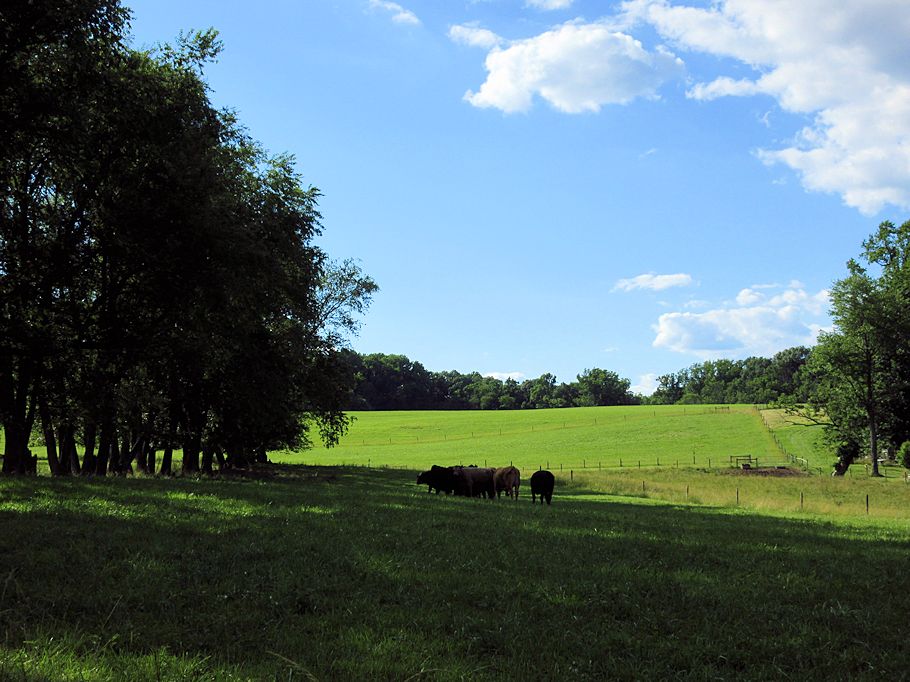
23 June 2023 Friday
A[n unedited] list again, sort of...
For a full 'history' of the transition from baroque to modern, you need both Piranesi's and Francesco's work...
...but, since The Discovery of Piranesi's Final Project is wholly my story, that transition from baroque to modern is now part of the present transition from modern to "forever now."
As far as Bianconi, Piranesi, Fea, Francesco and myself are concerned, I'm the only one to have known the true identity of the so-called Circus of Caracalla, and that's why, of the five of us, I'm the one able to complete the "circus, circus" story.
That's the thing about making discoveries, you actually make history while you write the history of making the discoveries.
You cannot discount the deficit against Bainconi, Piranesi, Fea, and Francesco for their not knowing that Maxentius built the grand circus and temple mausoleum on the Appian Way. Attributing the circus to Caracalla does nothing to reveal the circus' true historical importance. Where as, attributing the circus to Maxentius places the circus at the final apotheosis of pagan Roman architecture, and, with Eutropia as mother to Maxentius, the circus is exactly at the cusp where pagan Roman architecture ends and Christian Roman architecture begins.
Ah, so this is how I take control of the narrative.
Being cavalier like the Cavalier Piranesis . . .
. . . and looking forward to The Architecture of Hejduk Plus.
|